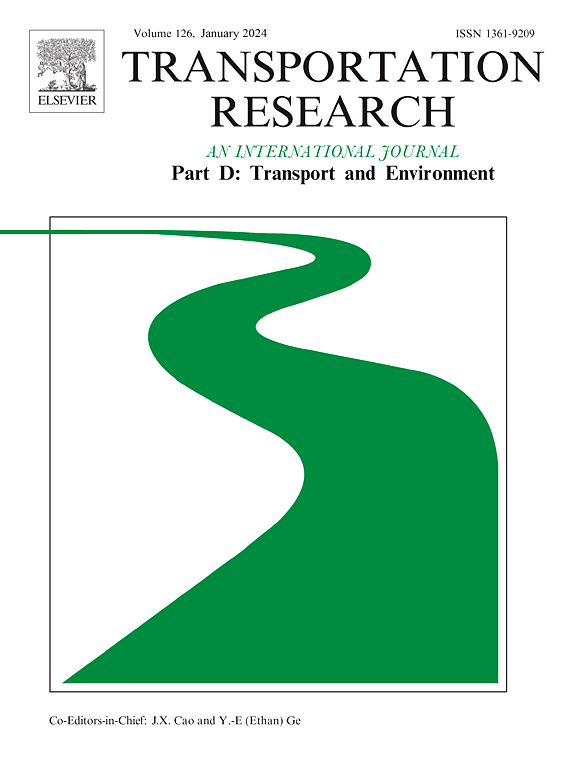基于多任务深度学习的交通排放与出行延误联合预测
IF 7.3
1区 工程技术
Q1 ENVIRONMENTAL STUDIES
Transportation Research Part D-transport and Environment
Pub Date : 2025-06-26
DOI:10.1016/j.trd.2025.104846
引用次数: 0
摘要
信号交叉口在城市交通管理中发挥着至关重要的作用,确保车辆在道路网络中的顺畅移动。然而,城市十字路口往往是拥堵的热点,增加了排放,延长了旅行延误,并对交通的可持续运行提出了挑战。现有的交通管理方法通常只关注出行延误或排放,而忽视了它们内在的相互依赖性;交通拥堵同时增加了排放和出行延误。本研究引入了一种称为多任务时间卷积网络(MT2CN)的新型深度学习框架,该框架可联合预测信号交叉口的交通排放和旅行延迟。从我们的研究结果中可以明显看出,提出的MT2CN方法优于传统的单任务模型,这表明了预测建模的重大发现。通过利用先进的深度学习技术和可解释的人工智能技术,如Shapley加性解释(SHAP),我们的框架提供了更准确的预测和可解释的见解,以促进可持续和智能的交通管理。本文章由计算机程序翻译,如有差异,请以英文原文为准。
Multi-task deep learning for joint prediction of traffic emissions and travel delay
Signalised intersections play a crucial role in urban traffic management, ensuring the smooth movement of vehicles across road networks. However, urban intersections are often hotspots for congestion, increasing emissions, extending travel delay, and posing challenges for sustainable operations of traffic. The existing traffic management methods typically focus on either travel delay or emissions in isolation, neglecting their inherent interdependence; congestion simultaneously increases emissions and travel delay. This study introduces a novel deep learning framework termed multi-task temporal convolutional network (MT2CN) that jointly predicts traffic emissions and travel delay at signalised intersections. It is evident from our findings that the proposed MT2CN approach outperforms the conventional single-task models, indicating a significant finding for predictive modelling. By utilising advanced deep learning techniques and explainable artificial intelligence techniques, such as Shapley additive explanations (SHAP), our framework provides more accurate predictions and explainable insights to facilitate sustainable and intelligent traffic management.
求助全文
通过发布文献求助,成功后即可免费获取论文全文。
去求助
来源期刊
CiteScore
14.40
自引率
9.20%
发文量
314
审稿时长
39 days
期刊介绍:
Transportation Research Part D: Transport and Environment focuses on original research exploring the environmental impacts of transportation, policy responses to these impacts, and their implications for transportation system design, planning, and management. The journal comprehensively covers the interaction between transportation and the environment, ranging from local effects on specific geographical areas to global implications such as natural resource depletion and atmospheric pollution.
We welcome research papers across all transportation modes, including maritime, air, and land transportation, assessing their environmental impacts broadly. Papers addressing both mobile aspects and transportation infrastructure are considered. The journal prioritizes empirical findings and policy responses of regulatory, planning, technical, or fiscal nature. Articles are policy-driven, accessible, and applicable to readers from diverse disciplines, emphasizing relevance and practicality. We encourage interdisciplinary submissions and welcome contributions from economically developing and advanced countries alike, reflecting our international orientation.

 求助内容:
求助内容: 应助结果提醒方式:
应助结果提醒方式:


